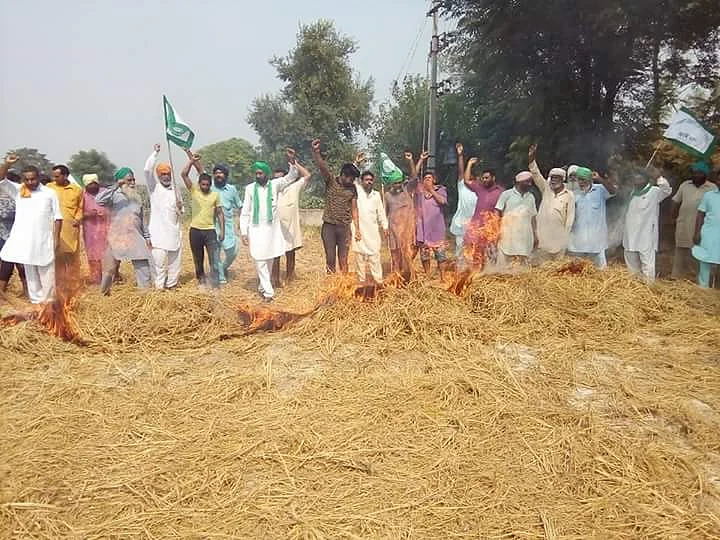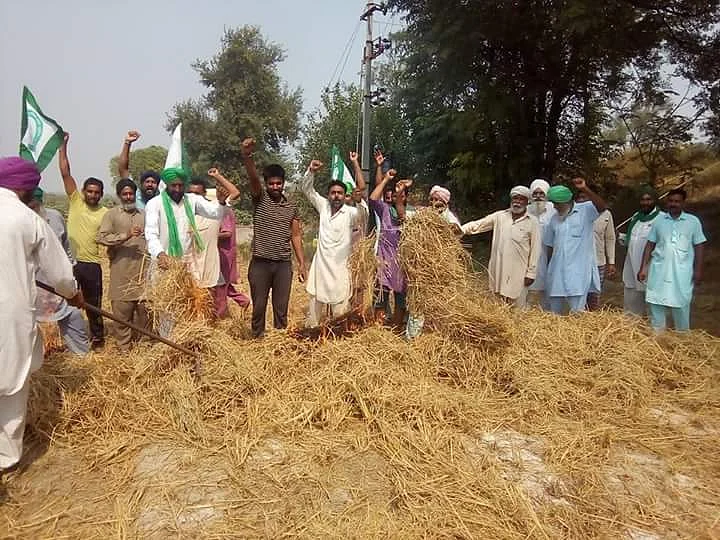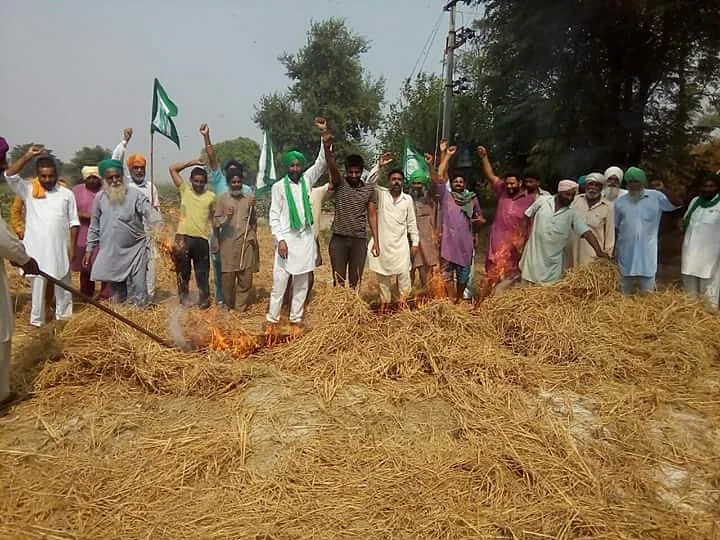We know it pollutes the air, but we don’t have any alternative and the government is not helping.
This is the chief argument of farmers in Punjab as they continue to burn paddy stubble – crop residue left after the rice-giving crop is harvested – across the state, unleashing more pollution towards the national capital.
Last year, Delhi environment minister Imran Hussain blamed stubble burning for contributing to Delhi’s abysmal pollution levels.
Earlier this month, seeking government aid before they agree with a ban on the practice, farmer unions set fire to stubble near Nabha, not far from Punjab chief minister Captain Amarinder Singh’s hometown Patiala, in a show of defiance.
There is talk about blacklisting such farmers from getting loans, but they couldn’t care less.
What’s the Issue?
Punjab produces 20 million tonnes of paddy straw a year, and farms are cleared to sow wheat next. The smog rises to engulf Delhi-NCR, around 250 km away from Punjab’s border with Haryana, a state that lies in between and contributes to the pollution as well.
Last year, the National Green Tribunal (NGT) pulled up the Punjab government over the coals, and banned the burning. It also became a minor issue for perception-managers of rival parties against the Aam Aadmi Party (AAP) in the Punjab assembly polls, when Delhi’s Arvind Kejriwal regime blamed the smog on Punjab (and Haryana).
The state had already banned it in 2013, but hardly ever enforced it until last year. Till last week, the Punjab Pollution Control Board (PPCB) reported 250 cases of burning of straw/stubble in three days.
Are Farmers Being Encouraged to Burn Stubble?
The Punjab Remote Sensing Centre is using high-tech satellite imagery to pinpoint areas where stubble is being burned. The red dots that denote it are not hard to find since unions – particularly the relatively militant factions (Dakaunda and Ekta-Ugrahan) of the Bhartiya Kisan Union – are encouraging farmers to burn straw.
State chief of the BKU (Ekta-Ugrahan) Joginder Singh said:
The government must give us technology and money to afford better ways of managing the stubble. It’s an age-old practice. Already the farming sector is in distress.
Mechanised Means of Disposing Stubble Will Cost The Govt
While farmers have been asking for at least an extra Rs 200 per quintal, the state government has sought compensation to farmers at Rs 100 a quintal.
Farmers say mechanised cutting of stubble – which can then be used as manure or in cardboard manufacturing units – entails additional costs of Rs 6,000 per acre.
Their calculation of Rs 200 (“at least”) per quintal is based on average yield of 30 quintals an acre. The day that farmers burnt straw in a show of non-cooperation at Nabha, CM Capt Amarinder Singh met Union agriculture minister Radha Mohan Singh to reiterate the demand.
Currently, hardly any paddy is left to be harvested before wheat is sowed in November. Which means, crop burning could be more and more visible now onwards.
Blame Games and Tactics Continue
The Congress government, that took over only in March, has shifted the blame on the Union government. In a hot-and-cold tactic, the pollution board has meanwhile told staff of different departments to keep a check.
PPCB chairman Kahan Singh Pannu has termed the farmers’ defiance as a “desperate bid by some”. He claims “most farmers have decided to follow the instructions”.Where are the alternate machines, asks Ram Singh, Mansa district president of BKU (E-U).
Why can’t the machines be bought in bulk by the government and given to cooperative societies, which then rent them out at reasonable prices for the farmers to use? The government cannot simply expect to work this out be issuing appeals. We do not want to burn the ‘parali’ (stubble). We have to.
No Concrete Step
Officials across regimes have been visiting fields to demonstrate innovative cutters, but these remain private endeavours with no plan of assistance – monetary or technical – put into practice.
The Congress government is in no real position to confront the farmers – despite posturing and photo-ops by some bureaucrats. Its conditional crop-loan waiver plan has failed to come through due to lack of funds.
After the Punjab government claimed it was supporting 21 farmers as a model to manage stubble in a sustainable manner, the NGT directed that the government bring those farmers before it on Friday, 13 October.
(The author is a Chandigarh-based journalist.)
(Breathe In, Breathe Out: Are you finding it tough to breathe polluted air? Join hands with FIT in partnership with #MyRightToBreathe to find a solution to pollution. Send in your suggestions to fit@thequint.com or WhatsApp @ +919999008335)



